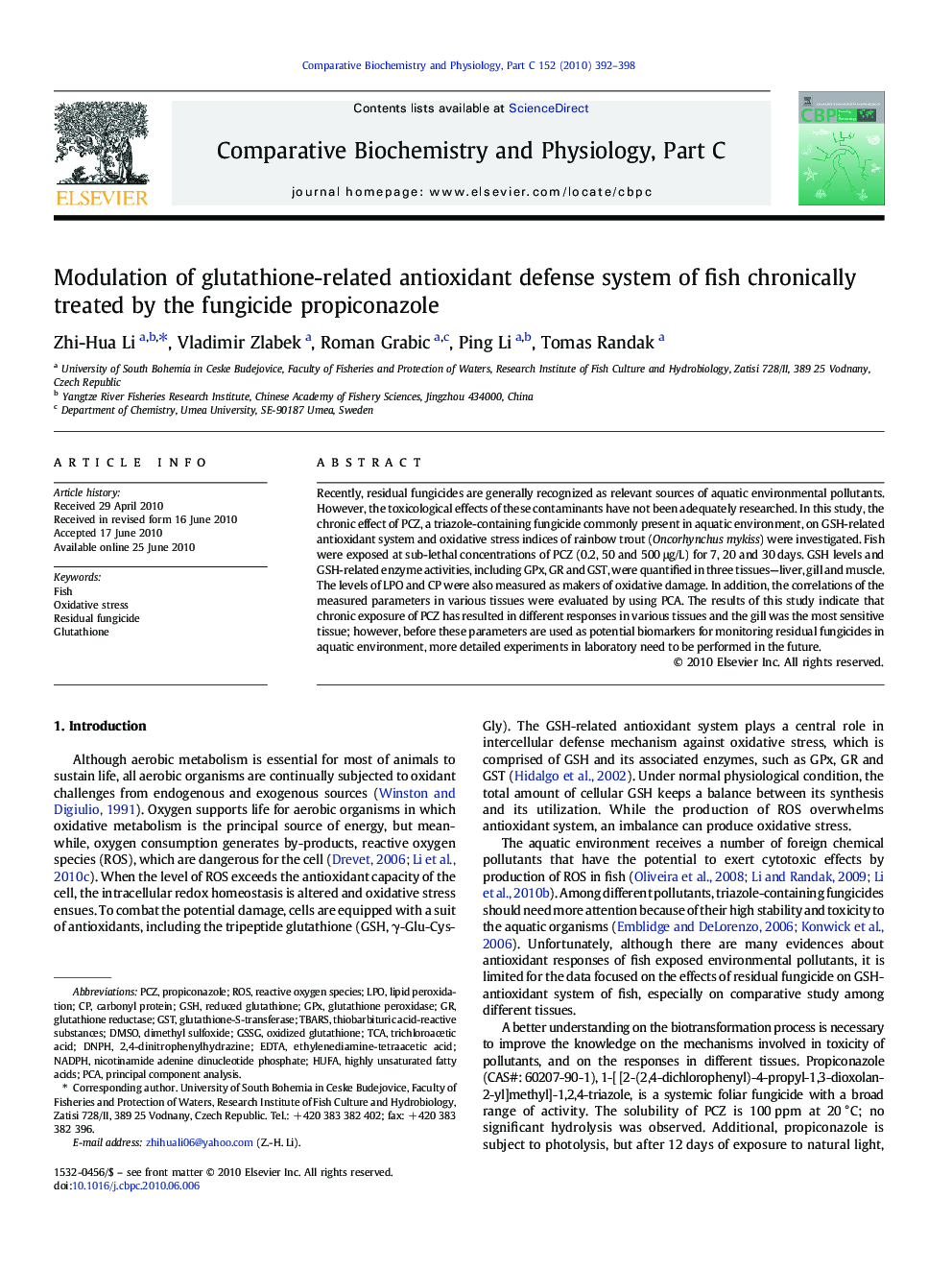| Article ID | Journal | Published Year | Pages | File Type |
|---|---|---|---|---|
| 1977621 | Comparative Biochemistry and Physiology Part C: Toxicology & Pharmacology | 2010 | 7 Pages |
Recently, residual fungicides are generally recognized as relevant sources of aquatic environmental pollutants. However, the toxicological effects of these contaminants have not been adequately researched. In this study, the chronic effect of PCZ, a triazole-containing fungicide commonly present in aquatic environment, on GSH-related antioxidant system and oxidative stress indices of rainbow trout (Oncorhynchus mykiss) were investigated. Fish were exposed at sub-lethal concentrations of PCZ (0.2, 50 and 500 μg/L) for 7, 20 and 30 days. GSH levels and GSH-related enzyme activities, including GPx, GR and GST, were quantified in three tissues—liver, gill and muscle. The levels of LPO and CP were also measured as makers of oxidative damage. In addition, the correlations of the measured parameters in various tissues were evaluated by using PCA. The results of this study indicate that chronic exposure of PCZ has resulted in different responses in various tissues and the gill was the most sensitive tissue; however, before these parameters are used as potential biomarkers for monitoring residual fungicides in aquatic environment, more detailed experiments in laboratory need to be performed in the future.
